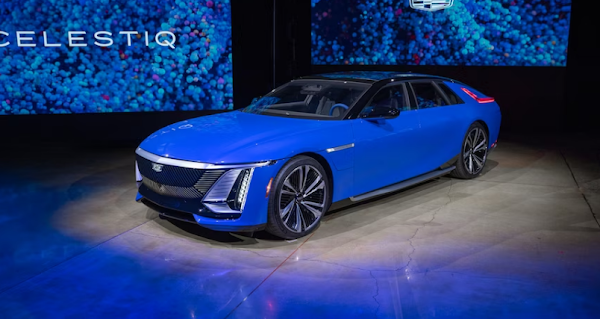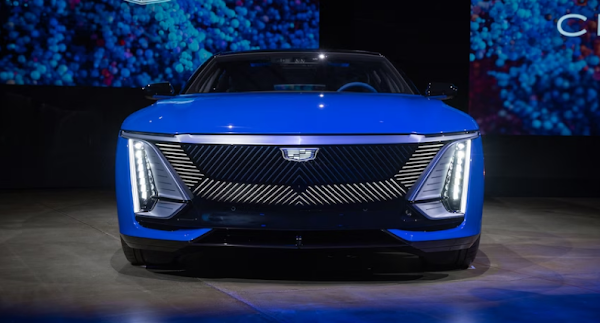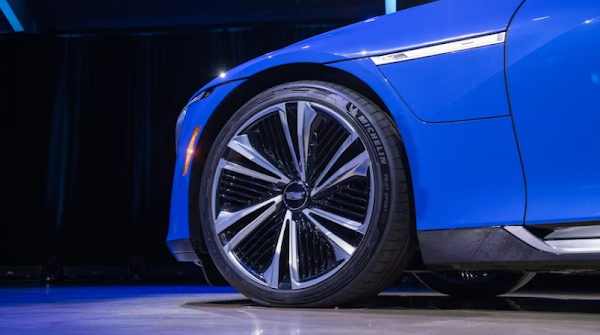
This attention-grabbing all-electric super sedan is finally here in production model form, longer than the Cadillac Escalade full-size SUV, and priced into the stratosphere Cadillac has long dreamed of returning to. Prices will start in the $300,000 range and customers can easily add up to $100,000 more to customize it, further ensuring that no one else has the exact same car.
The fact that Cadillac is even continuing production of the Celestiq is as surprising as the vehicle itself. But here it is, the fulfillment of a long-held desire for a flagship product. An idea became a vision, then a show car, and now an ultra-luxury sedan that retains almost all of the hero's features. The Celestiq is expected to have 600 horsepower, 640 lb-ft of torque, a 0-60 mph time of 3.8 seconds, a range of more than 300 miles, and is equipped with a 200 kW DC fast charging system for an added 78 miles of range. 10 minutes. Propulsion comes from a 111 kWh battery that drives a two-motor AWD system.

The Celestiq (pronounced Ceh-LESS-tick) will be handcrafted at GM's Global Technical Center in Warren, Michigan, where it was designed and engineered. Production is planned at just two models a day for global consumption, starting in December 2023. No more than six vehicles will be in the assembly process at any one time. GM executives say they are already talking to interested customers.
GM President Mark Reuss recently stopped by the design vault to see the final prototype for himself. MotorTrend asked him if he would buy it. Yes. He said his wife, Kim, who is an interior designer, would be freed up to work on the details of their respective cars.

Everyone who orders a Celestiq will work through dealers and officials who will connect them with GM designers. Buyers can come to Michigan to see ideas and samples, or GM designers can visit them. Any color is possible as each car is handcrafted. Since the 115 parts are 3D printed, the intricate personalized details are nothing more than your imagination. Want your signature engraved on the metal plate on the dashboard? Finished. Guitar strings, tennis racket strings, dog fur, pressed flowers from your rose garden—all can be combined to make a personal statement. There are no base cars or trims. Every Celestiq will be different. The entire process can take up to 10 months to outline and complete.
This is how Cadillac planned to reach the top of the luxury ladder to take on Rolls-Royce, Maybach, and Bentley while leaving Lincoln in the doldrums. The team had the Ghost and Flying Spur as benchmarks, but the end result is a car that looks like nothing else on the road, said interior design manager Tristan Murphy.
The Celestiq looks like a spaceship, with long languid lines and a windshield steeper than a Corvette, no exterior door handles, a giant hatch, and a big, smart glass roof with an embedded antenna. Eliminating the need for a sunshade or headliner creates more headroom and each passenger can control how much light enters their roof quadrant, which is an improvement over the optional glass roof on the new BMW iX EV SUV, which can only fog up. full panel.

The Celestiq is exclusively an electric vehicle and uses GM's unique Ultium battery system. This new architecture is dedicated to the Celestiq—at least until the idea of a customizable SUV becomes a reality. The car uses the same battery cells as the GMC Hummer EV pickup or even the smaller Cadillac Lyriq midsize crossover, but in the Celestiq the batteries are placed horizontally instead of stacked vertically to keep the car low. And the layout of the skateboards is not the same because it would make the floor too high.
Celestiq's five battery modules have different shapes and are stacked at different heights, depending on where they are placed. The taller one is in the middle of the limousine-like car; they are stacked nine cells high under the two front seats, 12 under the two rear seats, and only six cells below the footwells.
The spaceframe is made of aluminum, and most of the body panels are made of carbon fiber but the doors have to use composites to incorporate sensors that actuate the doors to open and close. Even so, the car weighs more than 6,000 pounds.
There's no exterior handle to mar the giant's side profile; touch the capacitive button on the B pillar or let the vehicle recognize the key fob and open the door on approach. Use the center console touchscreen to open the doors for oncoming passengers.

The Celestiq also marks the return of the "Goddess," the mascot that graced the hoods of Cadillac cars from the 1930s to the 1950s. There's an illuminated Goddess on each front fender, on the glass rotary control knob on the center console, and she appears on the touchscreen.
Cadillac's Mondrian emblem stripes are replicated throughout the car. They adorn the four quadrants of the glass roof and are etched into the sidewalls of summer tires developed with Michelin for the 23-inch forged aluminum wheels.
The Celestiq continues Cadillac's signature vertical lighting but each LED is its own light source, rather than a collection of lights, and the Digital MicroMirror Device headlamps with 1.3 million pixels per side are an integral part of the Cadillac Crest's choreographed and projected lighting suite that greets its owner as they arrive. approach the car to turn on the power. To quickly check the car's charging status, use the illumination height of the vertical lamp as a gauge.
The interior gets the royal treatment with each of the four seats having an equal throne in terms of materials and comfort. All have heating, ventilation, neck warmers, reclining, massage, and access to screens. Up front, there's a 55-inch screen with digital blocking so the driver can't watch movies playing on the passenger side. The AKG audio system has 38 speakers inside and three outside as part of the electric vehicle's sound enhancement system.
The seats are leather, as are the dashboard, doors, and even the floor. The cupholders and cubbies are covered in suede. Anything that looks metal is real metal. Some notable mistakes: no sunscreen or aromatherapy.
Celestiq uses 3D printing and “flex fab” to create unique components. The largest 3D-printed steel component is the center section of the steering wheel. A medical laser for eye surgery is used to etch fine symbols on it. More than 300 parts are created through flexible fabrication where machines take sheets of steel and puncture, bend, weld, and machine them, resulting in finished parts that can be used to house electronic devices or a center console that runs the length of the car.

Very little was removed from the show car to put the Celestiq into production. To comply with regulations, conventional rear-view mirrors replace the cameras and the rear side windows cannot be tinted. The taillights were moved from the hatch to the body and the rear bumper was widened to meet crash structure regulations. But as work continued on the car, actual features were added, such as polished stainless steel D rings that guide the seat belts, the first use of 3D printing for a safety feature.
The Celestiq has adaptive air suspension, magnetic ride control, active roll control, rear steering, an active rear spoiler, and a comprehensive suite of safety and driver assistance systems. It will be equipped with hardware for Ultra Cruise hands-free driving assistance but its full capabilities won't be ready at launch.
said vice president of global design Michael Simcoe. The Celestiq can trace its lineage to the Escala concept shown in 2016, which once headed production with a V-8. When the decision was made to switch to all-electric vehicles for the Cadillac brand, the Escala was left behind. A vision model was created for internal viewing only—a caricature before there was a new program for a flagship product—and from that initiative, the Celestiq show car was created to set the tone for future Cadillac designs.
For unique, bespoke cars, engineers and designers must forget past practices and view the car as a blank slate to be designed by the customer, with the ability to create complex individual parts by sand casting and 3D printing. Pieces like the brushed and polished machined aluminum trim at the front of the hood would not be possible on a high-volume vehicle, says exterior design manager Taki Karras.











